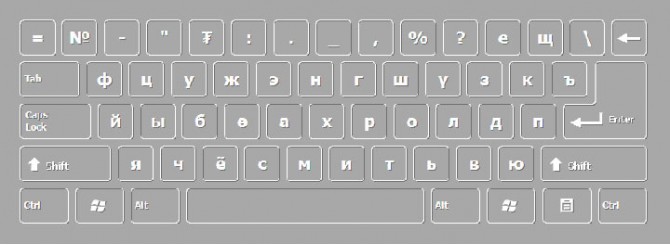MONGOLIAN DESKTOP KEYBOARD FREE DOWNLOAD
JCUKEN (ЙЦУКЕН, also known as YCUKEN, YTsUKEN and JTSUKEN) is the main Cyrillic keyboard layout for the Russian language in computers and typewriters. Earlier in Russia JIUKEN (ЙІУКЕН) layout was the main layout, but it was replaced by JCUKEN when the Russian alphabet reform of 1917 removed the letters Ѣ and І.
The Mongolian keyboard uses a modified version of JCUKEN, called "FCUZHEN" (ФЦУЖЭН), where letters specific to Russian are replaced by letters that see more use in Mongolian.
Cyrillic: Монгол бичиг Mongol bichig), also known as Hudum Mongol bichig, was the first writing system created specifically for the Mongolian language, and was the most successful until the introduction of Cyrillic in 1946. Derived from Sogdian, Mongolian is a true alphabet, with separate letters for consonants and vowels. The Mongolian script has been adapted to write languages such as Oirat and Manchu. Alphabets based on this classical vertical script are used in Inner Mongolia and other parts of China to this day to write Mongolian, Xibe and, experimentally, Evenki.
The traditional or classical Mongolian alphabet, sometimes called Hudum 'traditional' in Oirat in contrast to the Clear script (Todo 'exact'), is the original form of the Mongolian script used to write the Mongolian language. It does not distinguish several vowels (o/u, ö/ü, final a/e) and consonants (t/d, k/g, sometimes ž/y) that were not required for Uyghur, which was the source of the Mongol (or Uyghur-Mongol) script.[1] The result is somewhat comparable to the situation of English, which must represent ten or more vowels with only five letters and uses the digraph th for two distinct sounds. Ambiguity is sometimes prevented by context, as the requirements of vowel harmony and syllable sequence usually indicate the correct sound. Moreover, as there are few words with an exactly identical spelling, actual ambiguities are rare for a reader who knows the orthography.
Letters have different forms depending on their position in a word: initial, medial, or final. In some cases, additional graphic variants are selected for visual harmony with the subsequent character.
Frontype is easy to use multilingual user-friendly virtual onscreen keyboard that turns any keyboard to your language layout. Just add needed language as input and start to type!
Write a review about MONGOLIAN DESKTOP KEYBOARD FREE DOWNLOAD
Your Name:Your Review: Note: HTML is not translated!
Rating: Bad Good
Enter the code in the box below:






















